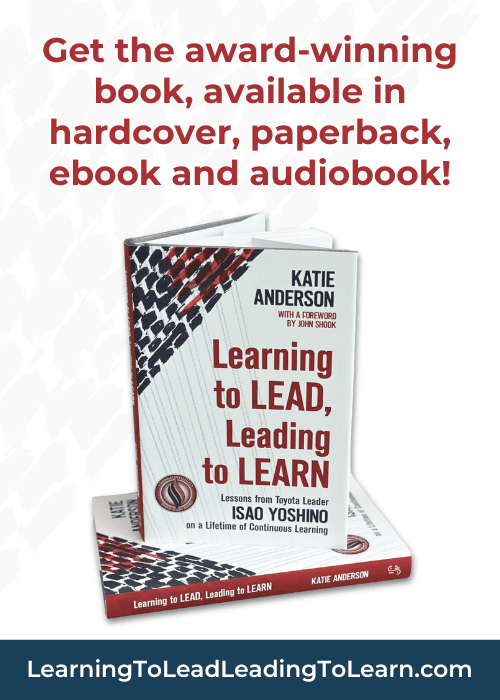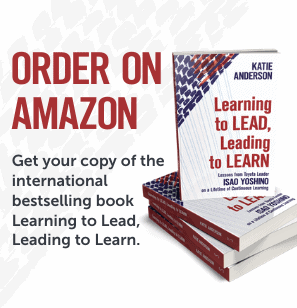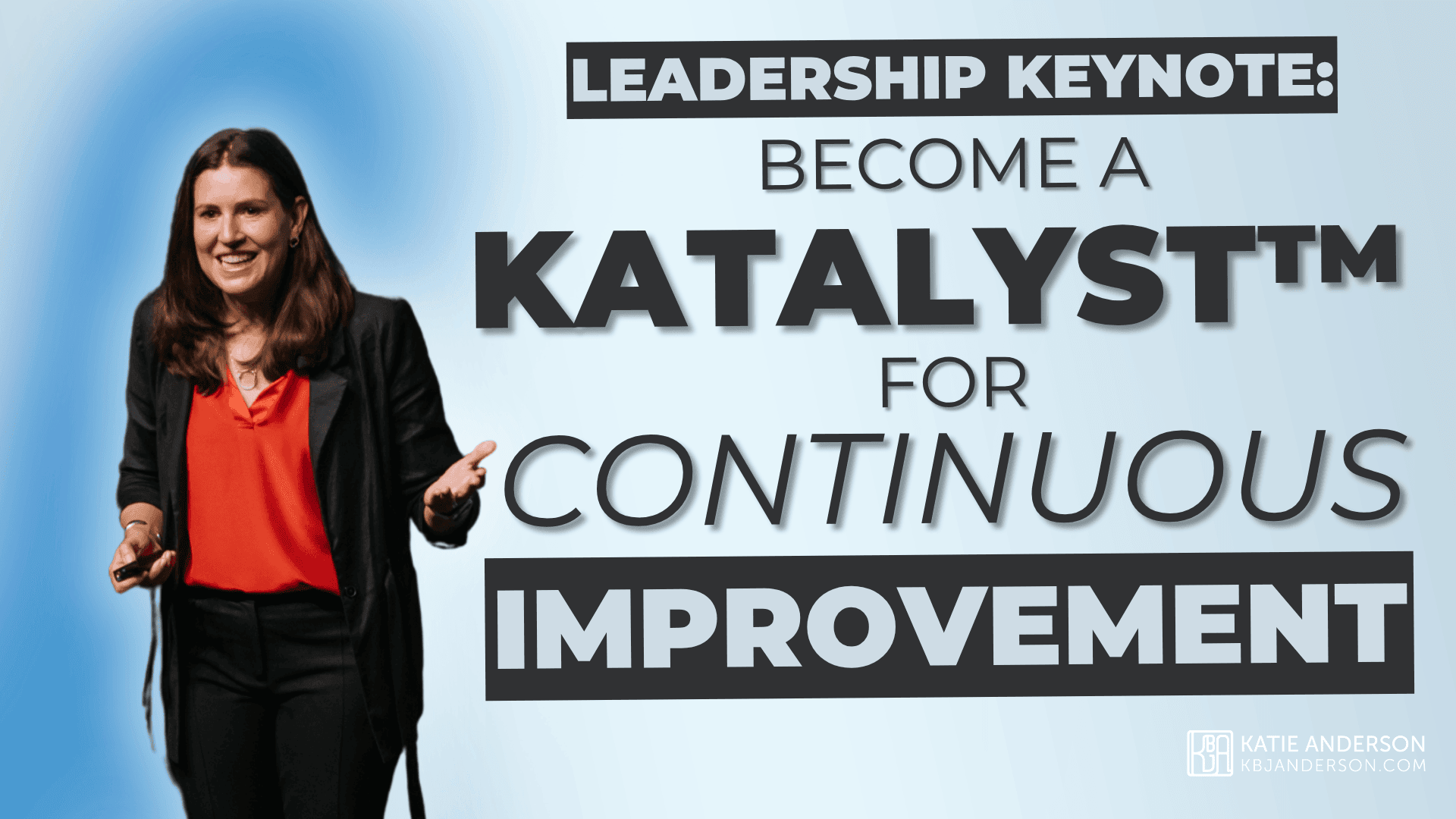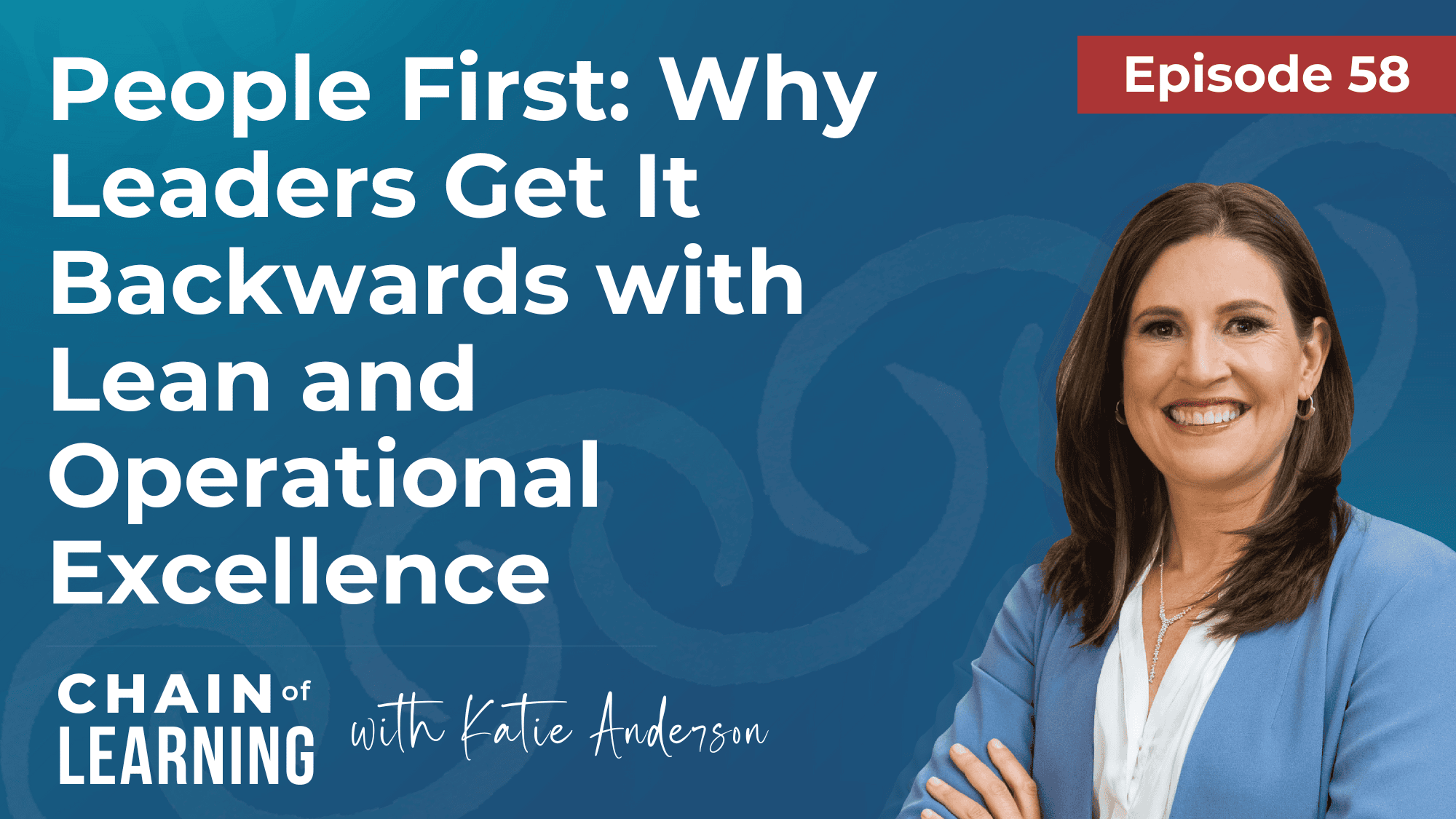As leaders and continuous improvement practitioners, we’re committed to learning and to creating a “learning organization”. But how? Any leader seeking to create a learning organization must cultivate both the technical skills for problem-solving and the social skills of coaching for problem-solving. This is the foundation of what lean and continuous improvement is about – not the tools but the thinking process and behaviors that support learning. Imagine you could find a list of books on problem-solving and coaching for improvement at the click of your mouse?
I’m often asked for my top book recommendations on a host of topics and I’ve decided to pull together several posts sharing some of my “go-to” books that have influenced me personally and that I recommend for anyone seeking to develop their team’s capabilities – both on how to use problem-solving techniques and fundamental coaching skills to develop an organization filled with problem solvers.
While this is not a conclusive list of my best books about problem-solving (they’re 10 top books rather than my top 10), all of these books are my go-to recommendations for any coach, leader, individual contributor, continuous improvement practitioner, or manager seeking to both achieve needed goals AND develop their people at the same time.
They are some of (but not the only!) best books on problem-solving and critical thinking. I had a difficult time honing this list down to just ten, so I decided to start with these ones.
This list is the second in a three-part series that shares my top book recommendations broken down into three categories:
- 10 Top Books on Lean Management, Lean Production, and Toyota History
- 10 Top Books on Coaching and Problem-Solving
- 10 Top Books on Culture, Organizational Change, & Strategy
Top Books on Problem-Solving and Coaching for Improvement
This article focuses on books that can help you become a better problem-solver – and a better coach for improvement, lean, and problem-solving.
There are so many on my shelves that have influenced my personal practice of how to develop a learning organization or practice lean thinking that it was hard to get this list down to just ten books.
So, in order to narrow it down, I am first sharing influential books from authors in my own learning journey, who have also honored my book Learning to Lead, Leading to Learn with their endorsement, plus a few bonus books on problem-solving and coaching for improvement as well.
Here you’ll learn about why I recommend these 10 top books on problem-solving and coaching for improvement, as well as sharing my personal experiences with many of these leading thinkers, and how they’ve informed my Chain of Learning.
There are many more books I could include on this list, but these are some of my go-to books that I suggest if you are a lean practitioner or anyone seeking to understand the true success of creating a real learning organization where people have the capability and confidence to solve problems at all levels, each and every day.
Without further ado, and in no particular order, here are 10 of my top books on problem-solving and coaching for improvement.
Learning to Lead, Leading to Learn
 I’m including my own book Learning to Lead, Leading to Learn: Lessons from Toyota leader Isao Yoshino on a Lifetime of Continuous Learning, on this list of books on problem-solving and coaching for improvement as I learned so much about the fundamentals of coaching for improvement and developing a learning organization through my years of conversation with 40-year Toyota leader Isao Yoshino. Through the book I attempt to capture insights and shared wisdom between Mr. Yoshino and me about how we all can develop to become leaders (either informally or formally with a management or executive position)…and to lead with an attitude towards learning. Isao Yoshino’s four decades at Toyota show us the power of “leader as coach” and demonstrates – through his experiences and reflections on key moments in Toyota’s history – how an organization creates a learning culture one person at a time.
I’m including my own book Learning to Lead, Leading to Learn: Lessons from Toyota leader Isao Yoshino on a Lifetime of Continuous Learning, on this list of books on problem-solving and coaching for improvement as I learned so much about the fundamentals of coaching for improvement and developing a learning organization through my years of conversation with 40-year Toyota leader Isao Yoshino. Through the book I attempt to capture insights and shared wisdom between Mr. Yoshino and me about how we all can develop to become leaders (either informally or formally with a management or executive position)…and to lead with an attitude towards learning. Isao Yoshino’s four decades at Toyota show us the power of “leader as coach” and demonstrates – through his experiences and reflections on key moments in Toyota’s history – how an organization creates a learning culture one person at a time.
But don’t just take my word for it about the impact of Learning to Lead, Leading to Learn! Below you can read what these other influential authors had to say about their learning from the book.
Managing to Learn by John Shook
Chairman and CEO of the Lean Enterprise Institute
 The list of my top books on lean problem-solving coaching for improvement and wouldn’t be complete without including John’s book Managing to Learn: Using the A3 Management Process to Solve Problems, Gain Agreement, Mentor and Lead.
The list of my top books on lean problem-solving coaching for improvement and wouldn’t be complete without including John’s book Managing to Learn: Using the A3 Management Process to Solve Problems, Gain Agreement, Mentor and Lead.
This book is the book to read, and re-read, to really understand what A3 problem-solving is about. It’s not the tool – it’s the thinking process and the coaching process to support it.
John Shook has been an important link in my “Chain of Learning” about lean and leadership since I first was exposed to the Toyota Way and lean thinking in the mid-2000s.
Long before I met Isao Yoshino, Managing to Learn became – and continues to be – my go-to book on A3 thinking and practice. It also is among my top books to understand the management principles of lean management and the Toyota way. (You can see the whole list here).
As I describe in the introduction to Learning to Lead, Leading to Learn, it was through John at the Lean Coaching Summit in 2014 that I met Isao Yoshino, who was his boss when John was the first non-Japanese employee at Toyota Motor Corporation and who was the inspiration for the manager character in his fictionalized leadership book, Managing to Learn.
In this book, John illustrates not only what he learned about the process of problem-solving using an A3 format, but also what he learned about how leaders coach and develop their people to think more deeply and develop the capabilities and confidence for problem-solving.
In John’s forward to Learning to Lead, Leading to Learn, he shares some more insights about his experience reporting to Mr. Yoshino and “learning to lead”, and their partnership in developing the NUMMI training program – Toyota’s experiment to see if they could translate their famous Toyota Production System to another culture. (Hint, they could! Check out Mr. Yoshino’s and John Shook’s inside stories about his time in my book Learning to Lead, Leading to Learn).
Here’s what John Shook had to say about Learning to Lead, Leading to Learn in an excerpt from his foreword to the book:
“In her debut book, “Learning to Lead, Leading to Learn”, Katie Anderson has distilled countless hours of interviews, lecture transcripts, and conversation (and ample debate, too, I am sure) into a cohesive whole that’s informative, inspiring, and entertaining. I am grateful to Katie for capturing Isao Yoshino’s story … and for going beyond just documenting history but weaving it all into a rich tapestry that readers of many interests will find compelling and useful.
Explorers of lean thinking and practice will find a deep dive into the mind of a Toyota manager during the defining final third of the 20th century. Japanophiles will find access to the inner workings of Japan’s largest industrial enterprise during the heyday of Japan Inc. And, perhaps most importantly, executive coaches — or anyone with an interest in the phenomenon of ‘manager-as-coach’ — will find in these pages a rich expression of the thinking and practices of a deeply thoughtful, extraordinarily reflective practitioner of the craft.”
From the Publisher:
Managing to Learn by Toyota veteran John Shook, reveals the thinking underlying the A3 management process found at the heart of lean management and leadership. Constructed as a dialogue between a manager and his boss, the book explains how “A3 thinking” helps managers and executives identify, frame, and act on problems and challenges. Shook calls this A3 approach, “the key to Toyota’s entire system of developing talent and continually deepening its knowledge and capabilities.”
How to Coach for Creativity and Service Excellence: A Lean Coaching Workbook by Karyn Ross
Author of The Kind Leader and The Toyota Way to Service Excellence
 Karyn and I first met in person at the European Lean Educator Conference in the Netherlands in 2017, where she, Isao Yoshino, and I were both keynoting. We quickly became close friends and collaborators (one of the creative outputs of which is a community of practice called “K2C2”, plus many articles and podcasts). Karyn also played an important role in the creation of Learning to Lead, Leading to Learn, serving as my developmental editor and reviewing the earliest draft of the book.
Karyn and I first met in person at the European Lean Educator Conference in the Netherlands in 2017, where she, Isao Yoshino, and I were both keynoting. We quickly became close friends and collaborators (one of the creative outputs of which is a community of practice called “K2C2”, plus many articles and podcasts). Karyn also played an important role in the creation of Learning to Lead, Leading to Learn, serving as my developmental editor and reviewing the earliest draft of the book.
Karyn’s book How to Coach for Creativity and Service Excellence is a fabulous resource for any lean coach or leader looking to improve, deepen, and simplify their coaching and problem-solving practices…and help teach others to do the same! Karyn walks the reader through a practical guide of how to approach continuous improvement and apply lean principles in service organization, with daily examples and practices to implement immediately.
Another of Karyn’s books, co-authored with Jeffrey Liker, The Toyota Way to Service Excellence is another of my top recommended books in lean management and the Toyota Way (you can see the whole list here).
Here is what Karyn Ross had to say about Learning to Lead, Leading to Learn:
“Those who are lean practitioners always know that the best way to understand is to ‘go and see!’ In this wonderful book of stories and reflections about Mr. Yoshino’s tenure at Toyota, Katie Anderson beautifully captures and helps us ‘see’ Mr. Yoshino’s lessons on “Leading to Learn and Learning to Lead”. I know you will enjoy, learn and grow from this book as much as I have!”
Karyn Ross – Author, Coach & Consultant
How to Coach for Creativity and Service Excellence: A Lean Coaching Workbook
From the Publisher:
How to Coach for Creativity and Service Excellence: A Lean Coaching Workbook is a self-contained workbook, in which the reader completes twenty-one days of practical exercises and activities focused on creativity, lean and coaching (one set per day). This will enable the reader to develop their capability and confidence to be creative, adapt lean principles, practices and tools to their unique service organization and coach others to do the same. The workbook guides the reader through a structured, systematic, easy-to-understand, habit-building approach, and functions as the reader’s ‘coach’. As the reader ‘works’ their way through the book, they will reclaim their creativity, learn Karyn’s tried-and-true 15-minute a day coaching approach and adapt lean principles, practices and tools to their particular service organization.
The Coaching Habit by Michael Bungay Stanier
Author of The Advice Trap and How to Begin
 When I first discovered Michael Bungay Stanier’s book The Coaching Habit, my first response was “this was the book I wish I’d written”! I love the simplicity, the creative layout, the humor, and the practical takeaways of the book, and have become a follower of MBS ever since.
When I first discovered Michael Bungay Stanier’s book The Coaching Habit, my first response was “this was the book I wish I’d written”! I love the simplicity, the creative layout, the humor, and the practical takeaways of the book, and have become a follower of MBS ever since.
The Coaching Habit – and its follow-up companion The Advice Trap (you can read my interview with Michael about that book here) – are must-reads for anyone who works with other people (that’s everyone!) and seeking to create a learning organization. These books are complementary resources to what I write, coach, and teach about how to “Break the Telling Habit”. Like me, Michael too acknowledges the influence of Edgar Schein (scroll down to see two more of my “best coaching books” recommendations) on the power and nuance of asking questions and helping people move forward.
If you want to become a better coach, question-asker, and thinker, definitely check out MBS’s books!
Here’s what Michael had to say about Learning to Lead, Leading to Learn:
“This is a wise book that weaves a story of leadership between two core principles of purpose (i.e., what shapes us) and discovery (i.e., what defines us).
It will be fascinating for students of lean; should be essential for students of leadership.”
Michael Bungay Stanier – Author of The Coaching Habit and The Advice Trap
The Coaching Habit: Say Less, Ask More & Change the Way You Lead Forever
From the Publisher:
In Michael Bungay Stanier’s The Coaching Habit, coaching becomes a regular, informal part of your day so managers and their teams can work less hard and have more impact.
Drawing on years of experience training more than 10,000 busy managers from around the globe in practical, everyday coaching skills, Bungay Stanier reveals how to unlock your peoples’ potential. He unpacks seven essential coaching questions to demonstrate how – by saying less and asking more – you can develop coaching methods that produce great results.
Measures of Success by Mark Graban
Author of Lean Hospitals and The Executive Guide to Healthcare Kaizen
 Mark Graban and I have been colleagues – and now friends – since we met in early 2006 when I first started learning about lean while working at Stanford Children’s Hospital. Mark visited the organization and I led him on a “gemba walk” (gemba = the actual workplace).
Mark Graban and I have been colleagues – and now friends – since we met in early 2006 when I first started learning about lean while working at Stanford Children’s Hospital. Mark visited the organization and I led him on a “gemba walk” (gemba = the actual workplace).
Since then, I’ve been on Mark’s podcasts The Lean Blog multiple times (check out the first one or this one), and on the My Favorite Mistake Podcast one with Isao Yoshino and one on my own reflecting on how I applied the lessons from Learning to Lead, Leading to Learn to my own mistake.
There are so many books by Mark that I could include on multiple recommended book lists about lean and learning (such as Lean Hospitals), but this one is my most recommended of all of Mark’s books as it relates to helping organizations understand problems and know how to react to them.
I regularly recommend Measures of Success to clients to help them and their organizations understand and respond to data in a much more informed way. I have served on two non-profit Board of Directors over the past decade – for the Quality Committee for a local hospital and as the Chair of the Mother’s Milk Bank – and Measures of Success has directly influenced and improved our board meeting discussions because we (and the organizations’ leaders) are no longer reacting to noise and usual variation in the system.
Read Measures of Success and pass it on to your leaders. Your conversations will become more focused about real problems, not just the roller coaster of standard variation!
Here’s what Mark had to say about Learning to Lead, Leading to Learn:
“Isao Yoshino has a life’s worth of wisdom to share and Katie Anderson does a fantastic job of bringing those lessons to us in “Learning to Lead, Leading to Learn”. Katie skillfully weaves together stories that share an insider’s perspective on Toyota, and life, in a conversational tone that will be insightful to readers from any industry. This book will be helpful for those who are new to lean or the Toyota Production System, and it will fill in key details for those who have been practicing lean for a long time.”
Mark Graban, Author, Consultant, Professional Speaker, and Blogger
Measures of Success: React Less, Lead Better, Improve More
From the Publisher:
A practical guide for how to manage your metrics. Organizations depend on metrics for their business. Question is, are they helping people do the right things? Or, encouraging them to overreact to every uptick, downturn, and change?
In other words, reacting to noise. Noise is present in every metric. But, it’s our reaction to noise that causes waste and stress. Too often, people don’t recognize this.
Measures of Success shows a better way to chart and manage your metrics, in any organization or setting. For your business processes and activities, you need to know what’s working, what’s not, and what to change. And why. Then, you can determine what to stop doing, what to start doing, what to keep doing.
The Problem-Solver’s Toolkit by Elisabeth Swan and Tracy O’Rourke
 Need an all-in-one guide to help you understand the tools and processes of problem-solving? Look no further as Elisabeth Swan and Tracy O’Rourke, co-founders of the Just-in-Time Cafe, have created the essential go-to resource for you! With links to dozens of tools, templates, and other resources, this is an invaluable resource for any continuous improvement practitioner.
Need an all-in-one guide to help you understand the tools and processes of problem-solving? Look no further as Elisabeth Swan and Tracy O’Rourke, co-founders of the Just-in-Time Cafe, have created the essential go-to resource for you! With links to dozens of tools, templates, and other resources, this is an invaluable resource for any continuous improvement practitioner.
I got my copy of The Problem-Solver’s Toolkit as a gift from Elisabeth and Tracy when they were participants on my 2019 Japan Study Trip! It was there in Japan that I deepened my relationship with both Tracy and Elisabeth – over the six days of immersive learning (you can read about Elisabeth’s takeaways from her time in Japan with me here).
Fun fact: Elisabeth generously offered to serve on the Editorial Board of Learning to Lead, Leading to Learn, providing invaluable insights into the first draft!
Here’s what Elisabeth had to say about Learning to Lead, Leading to Learn:
“Katie Anderson has crafted a personal, lean learning journey from her conversations with Toyota leader Isao Yoshino that we all can savor. Out of their friendship comes a moving testament to the power of humanity, risk, failure, and reflection to positively impact the lives around us.
It’s a joy to soak up the reflections that culminated from Mr. Yoshino’s decades of business leadership and Ms. Anderson’s brilliant questions about what he learned during his career. Throughout the book, reflection questions invite the reader into the conversation. These serve as sparks to help us understand our own visions of who and what we can be, if we dare to weave our core purpose with our other passions.
This captivating read will make you stop and consider your own untapped reservoirs of influence, generosity of spirit, and humble leadership.”
Elisabeth Swan, Author and Just-In-Time Cafe Podcast Host
The Problem-Solver’s Toolkit: A Surprisingly Simple Guide to Your Lean Six Sigma Journey
From the Publisher:
The Problem-Solver’s Toolkit: A Surprisingly Simple Guide to Your Lean Six Sigma Journey is a fast-and-fun travel kit eBook for the process improvement traveler. We provide basic tool sets, examples, instructions, “detours” around potential “potholes” and some sight-seeing options when you want to learn more on a given topic.
- Contains 35 foundational Lean Six Sigma tools
- Covers essentials like the A3, Process Walks, SIPOCs, Check Sheets, Run Charts, 5S, Monitoring and Response Plans, and more – Just enough to get you rolling!
- Provides clear instructions, examples and best practices
- Draws on over 25 years of success helping organizations achieve their goals with Lean Six Sigma
The Conclusion Trap by Daniel Markovitz
Founder of Markovitz Consulting and Author
 Dan Markovitz and I first got to know each other via my blog and social media when I was living in Japan in 2015. As a former Japan resident himself, Dan and I enjoyed sharing insights about learning Japanese, and sharing experiences about living and working in Japan.
Dan Markovitz and I first got to know each other via my blog and social media when I was living in Japan in 2015. As a former Japan resident himself, Dan and I enjoyed sharing insights about learning Japanese, and sharing experiences about living and working in Japan.
We quickly discovered that our home-bases were both in the San Francisco Bay Area and, since 2016, regularly meet up in the city to grab a meal and talk about all things leadership, lean, Japan, and more.
On one of our lunches in 2019, we were focused on book writing. I was in the thick of writing – and rewriting – Learning to Lead, Leading to Learn, to be restructured as a leadership narrative. And Dan threw out the idea of a new book he was pondering about problem-solving and the problems with problem-solving.
That book became The Conclusion Trap – an easy-to-digest, quick-to-read, and super impactful guide for coaches, problem-solvers, and leaders at all levels on how to avoid jumping to solutions (which I’ve also written about here).
I’ve also included another of Dan’s books, Building the Fit Organization, in my book recommendations about building organizational culture. (forthcoming)!
Here’s what Dan had to say about Learning to Lead, Leading to Learn:
“Humans are hardwired to remember and learn from stories. Katie Anderson does the lean community a huge service by bringing storytelling to fundamental lean ideas through her interviews with Mr. Yoshino.
Everyone will benefit from the depth and color that the book brings to otherwise dry disquisitions of the Toyota Way.”
Daniel Markovitz, Author and Consultant
The Conclusion Trap: Four Steps to Better Decisions
From the Publisher:
Organizations (and individuals) frequently struggle to make good decisions. They spend money, invest in new technology, and invest enormous amounts of time and effort reorganizing in fruitless efforts to solve thorny problems. Why? Years of training and reinforcement in school and at work, time pressures and deadlines, and inherent psychological biases cause us to jump to conclusions before we even understand the problem we’re attempting to solve.
This book will help you make better decisions by eliminating that tendency. You’ll learn a powerful, four-step process that ensures you will deeply understand a problem before pursuing any given solution. Following this framework enables you to generate insight before you take action. Rather than needlessly hiring more people or spending money on new equipment and technology, you’ll be able to identify the bottlenecks, root causes, and structural impediments that create the problems in the first place. It reduces the chronic fire-fighting your organization suffers from, while increasing the likelihood that your problem stays solved.
Honorable Mentions for books on problem-solving and coaching for improvement:
There are several key books on my bookshelf that I have to include in this list of great books on problem-solving and coaching, but not necessarily by authors who provided a pre-publication endorsement of Learning to Lead, Leading to Learn.
Here are some honorable mentions that must be on this list. And of course, there are so many more that could deserve a place on this list of top books! I might have to do another list in the future!
People Solve Problems: The Power of Every Person, Every Day, Every Problem by Jamie Flinchbaugh
Founder of JFlinch and author
 Jamie Flichbaugh and I have been in the same circles for years – both promoters of problem-solving thinking and coaching in our work. I was thrilled to finally talk with Jamie directly when I interviewed him for his book People Solve Problems in 2022 (you can watch the interview and read highlights here)!
Jamie Flichbaugh and I have been in the same circles for years – both promoters of problem-solving thinking and coaching in our work. I was thrilled to finally talk with Jamie directly when I interviewed him for his book People Solve Problems in 2022 (you can watch the interview and read highlights here)!
In People Solve Problems: The Power of Every Person, Every Day, Every Problem, Jamie explores the real leverage to improve problem-solving: people. In it, he dives into the problems with problem-solving, including both the value and limits of tools and templates, as well as the marriage of problem-solving and standards.
Jamie outlines the culture needed in an organization in order for problem-solving to be effective, and the role of leaders, whether the CEO or a team leader, in building an environment where problem-solving can thrive.
People Solve Problems: The Power of Every Person, Every Day, Every Problem
From the Publisher:
Every person in every function of every organization is involved in solving problems. They show up in your email inbox, in meetings, in your own work. They are strategic and tactical, mundane and breakthrough, easy and difficult. Most organizations want to, and need to, improve their people’s problem-solving efforts, and so they offer them tools, templates, and training. Yet this is not where the leverage for impact is found.
People Solve Problems: The Power of Every Person, Every Day, Every Problem explores the real leverage to improve your problem-solving.
Helping and Humble Inquiry by Edgar Schein
Professor Emeritus of the Massachusetts Institute of Technology (MIT) Sloan School of Management
Edgar Schien is one of the most influential writers and thinkers when it comes to my approach to coaching, problem-solving, and helping. Two books of his that have most shaped my entire leadership approach and how I now coach leaders to “Break the Telling Habit” – and frankly, that helped me become a better human being across all aspects of my life – are his books Helping and Humble Inquiry.
The types of questions I teach are based on Schien’s categories and the impact they have on problem-solving ownership. Read more about this here.
While I haven’t (yet) personally talked with Professor Schein, I have had the opportunity to hear him speak at a conference hosted at Stanford  University – in conversation with John Shook (mentioned above and the author of the foreword of my book Learning to Lead, Leading to Learn), moderated by my former coach and good friend Margie Hegene.
University – in conversation with John Shook (mentioned above and the author of the foreword of my book Learning to Lead, Leading to Learn), moderated by my former coach and good friend Margie Hegene.
Schien, a professor-emeritus of MIT, and his son Peter, continue to write prolifically together about these fundamental concepts of humble leadership, humble coaching, and humble consulting.
If you haven’t read these books yet, do so! They will help you become a better leader, coach, and human.
Helping: How to Offer, Give, and Receive Help
From the Publisher:
Helping is a fundamental human activity, but it can also be a frustrating one. All too often, to our bewilderment, our sincere offers of help are resented, resisted, or refused—and we often react the same way when people try to help us. Why is it so difficult to provide or accept help? How can we make the whole process easier?
Many words are used for helping: assisting, aiding, advising, caregiving, coaching, consulting, counseling, guiding, mentoring, supporting, teaching, and more. In this seminal book on the topic, corporate culture and organizational development guru Ed Schein analyzes the social and psychological dynamics common to all types of helping relationships, explains why help is often not helpful, and shows what any would-be helpers must do to ensure that their assistance is both welcomed and genuinely useful. He shows how to navigate the delicate acts of asking for or offering help; avoid pitfalls; mitigate power imbalances; and establish a solid foundation of trust—and how these techniques can be applied to teamwork and organizational leadership.
Humble Inquiry: The Gentle Art of Asking Instead of Telling
From the Publisher:
We live, say Edgar and Peter Schein, in a culture of “tell.” All too often we tell others what we think they need to know or should do. But whether we are leading or following, what matters most is we get to the truth. We have to develop a commitment to sharing vital facts and identifying faulty assumptions—it can mean the difference between success and failure. This is why we need Humble Inquiry more than ever.
The Scheins define Humble Inquiry as “the gentle art of drawing someone out, of asking questions to which you do not know the answer, of building relationships based on curiosity and interest in the other person.” It was inspired by Edgar’s twenty years of work in high-hazard industries and the health-care system, where honest communication can literally mean the difference between life and death.
Toyota Kata Managing People for Improvement, Adaptiveness and Superior Results by Mike Rother
Author of The Toyota Kata and Toyota Kata Culture
 One of the most seminal frameworks about how an organization can create a culture of problem-solvers is Mike Rother’s Toyota Kata. In the book, and his subsequent guides (such as Toyota Kata Culture: Building Organizational Capability and Mindset Through Kata Coaching) and his generous open-source materials, Rother describes the “kata” (Japanese for pattern or practice) of improvement and problem-solving and the “kata” for coaching for improvement or problem-solving.
One of the most seminal frameworks about how an organization can create a culture of problem-solvers is Mike Rother’s Toyota Kata. In the book, and his subsequent guides (such as Toyota Kata Culture: Building Organizational Capability and Mindset Through Kata Coaching) and his generous open-source materials, Rother describes the “kata” (Japanese for pattern or practice) of improvement and problem-solving and the “kata” for coaching for improvement or problem-solving.
Rother’s framework documents the invisible pattern of thinking and practice of “leader as coach” at Toyota, which mirrors directly with Isao Yoshino’s experiences over 40-years at Toyota in both Japan and the U.S and are documented in Learning to Lead, Leading to Learn.
A leader’s role in Leading to Learn – just like in the coaching kata – is to
1) set the direction or challenge,
2) provide support to help the learner solve the problem, and
3) develop their own capabilities at the same time.
Toyota Kata helps make the invisible visible, and will help you, your team, and your organization accelerate your ability to learn, innovate, and solve important problems.
Toyota Kata: Managing People for Improvement, Adaptiveness and Superior Results
From the Publisher:
This game-changing book puts you behind the curtain at Toyota, providing new insight into the legendary automaker’s management practices and offering practical guidance for leading and developing people in a way that makes the best use of their brain power.
Drawing on six years of research into Toyota’s employee-management routines, Toyota Kata examines and elucidates, for the first time, the company’s organizational routines–called kata–that power its success with continuous improvement and adaptation. The book also reaches beyond Toyota to explain issues of human behavior in organizations and provide specific answers to questions such as:
- How can we make improvement and adaptation part of everyday work throughout the organization?
- How can we develop and utilize the capability of everyone in the organization to repeatedly work toward and achieve new levels of performance?
- How can we give an organization the power to handle dynamic, unpredictable situations and keep satisfying customers?
Other Resources:
 Learning to Lead, Leading to Learn Lessons From Toyota Leader Isao Yoshino on a Lifetime of Continuous Learning
Learning to Lead, Leading to Learn Lessons From Toyota Leader Isao Yoshino on a Lifetime of Continuous Learning
Explore more of Mr. Yoshino’s stories from his 40 years at Toyota, you can purchase a copy of it in paperback, eBook, or audiobook for your own reading and re-reading here.
The Companion Learning to Lead, Leading to Learn Workbook

To supplement your learning from the book, I’ve also created the Learning to Lead, Leading to Learn Workbook to help you deepen your understanding and practice of the concepts highlighted in the book. This 100-page workbook provides additional exercises and questions to prompt your deeper thinking on your own leadership legacy.
Additional articles about problem-solving and ask effective questions:
- What’s your biggest problem with problem solving?
- Effectively Coaching for Problem Solving
- When to “A3”? – Three problem solving tools to match the complexity of your problem
- How to Ask Problem-Solving Questions
- Effective Questions to Support Problem-Solving Thinking
- What If I Have The Answer? Should I still ask questions?
- Author Interview with Jamie Flinchbaugh: People Solve Problems
- How to Ask Effective Questions
- How to get out of the habit of telling: Pay attention to questions in disguise
- Reflections on When to Listen, Ask, & Tell
- Toyota Leadership Lessons: Part 9 – Learning the value of asking questions
 Take the Break the Telling Habit workshop!
Take the Break the Telling Habit workshop!
And, if you are looking to dive even more deeply into how to coach for problem-solving, check out my on-demand Break the Telling Habit Workshop — facilitated by me, which explores how to tap into your team’s potential by using powerful questions to unlock innovation and amplify engagement.
The Final Word on My 10 Top Books on Problem-Solving and Coaching for Improvement
I hope that your exploration of these books on problem-solving and coaching for improvement brings you as much growth as they did for me.
They explore how leaders apply problem-solving skills, and how you can grow your Chain of Learning by giving you sound problem-solving techniques and teaching you how to coach for improvement by creating problem-solving questions.
Let me know which ones you read and your thoughts on them.
All of these books on problem-solving and critical thinking, and the importance of problem-solving in leadership have played an important role in my own learning journey.
Whether you’re looking to learn about problem-solving in leadership and management, creative problem-solving questions and answers, or coaching for continuous improvement, these books on problem-solving and coaching for improvement have something for you.
And if you’re interested in reading my book, Learning to Lead, Leading to Learn, you can get your very own copy here.
Book Recommendation Series Overview
This is just one article of several that I’ve put together for you to deepen your Chain of Learning about lean, problem-solving, culture, strategy, and more.
This article contains a list of books books on problem-solving and coaching for improvement.
Here is the full list of my book recommendation series:
- Top Books on Lean Management, Lean Production, and Toyota History
- 10 Top Books on Coaching and Problem-Solving
- 10 Top Books on Culture, Organizational Change, & Strategy










